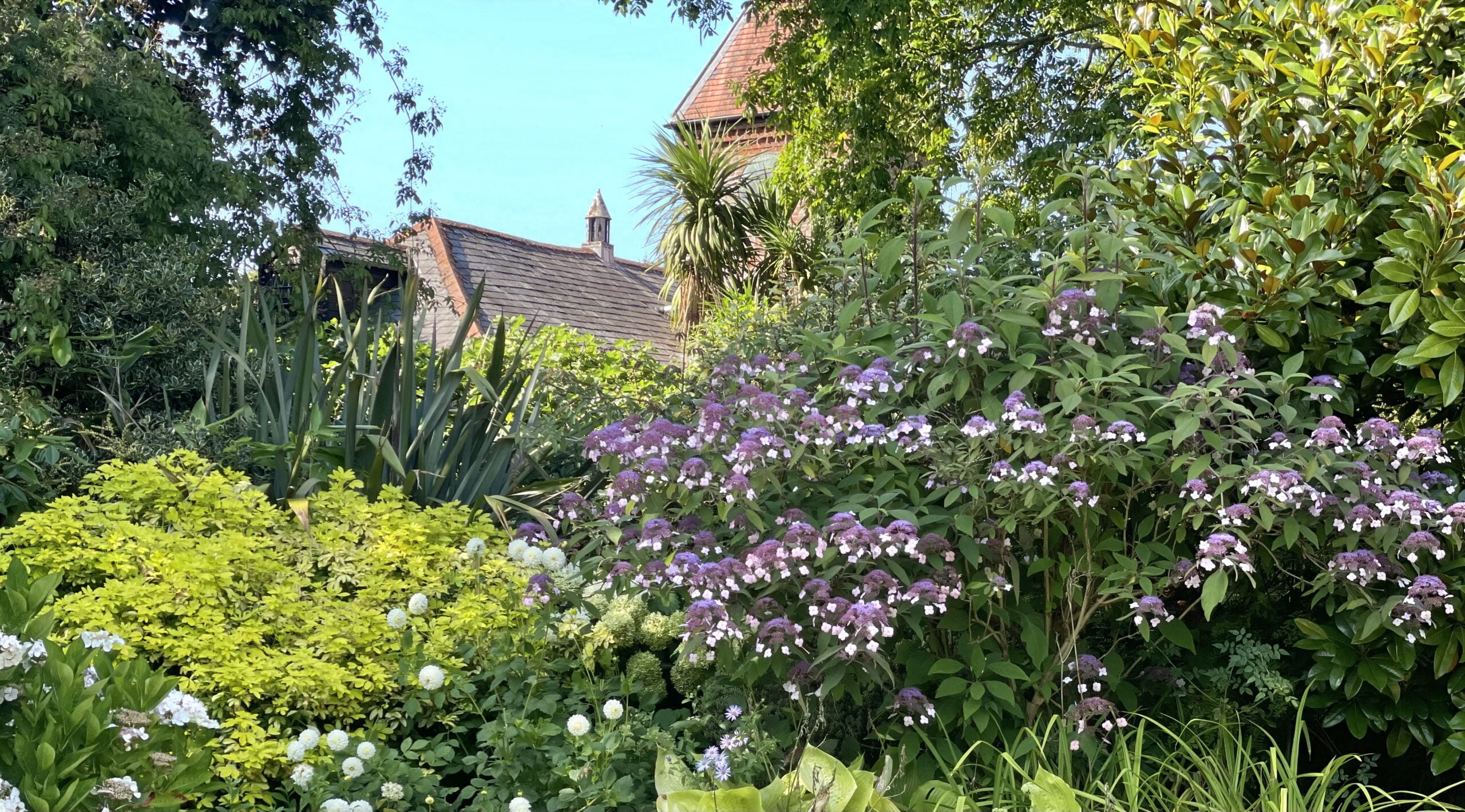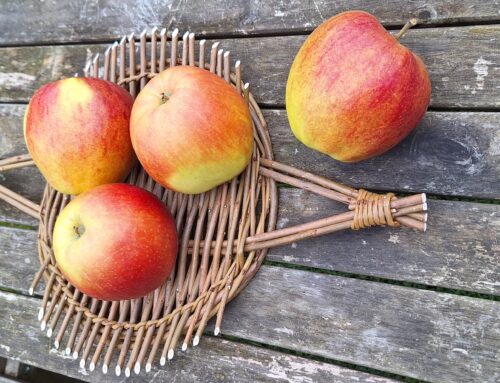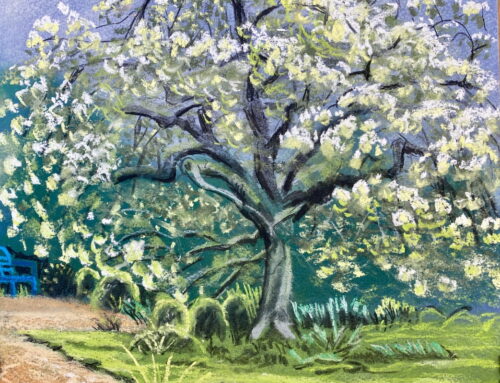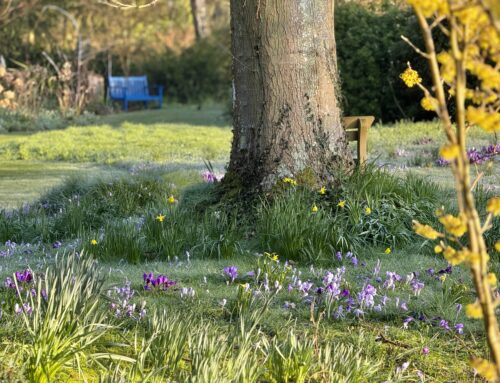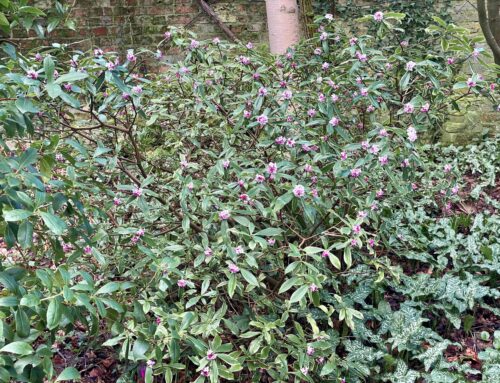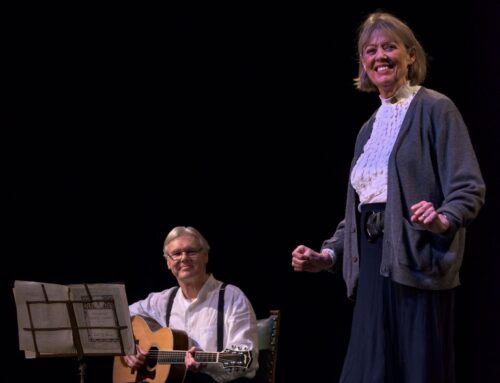Above: Hydrangea villosa in front of Clock House.
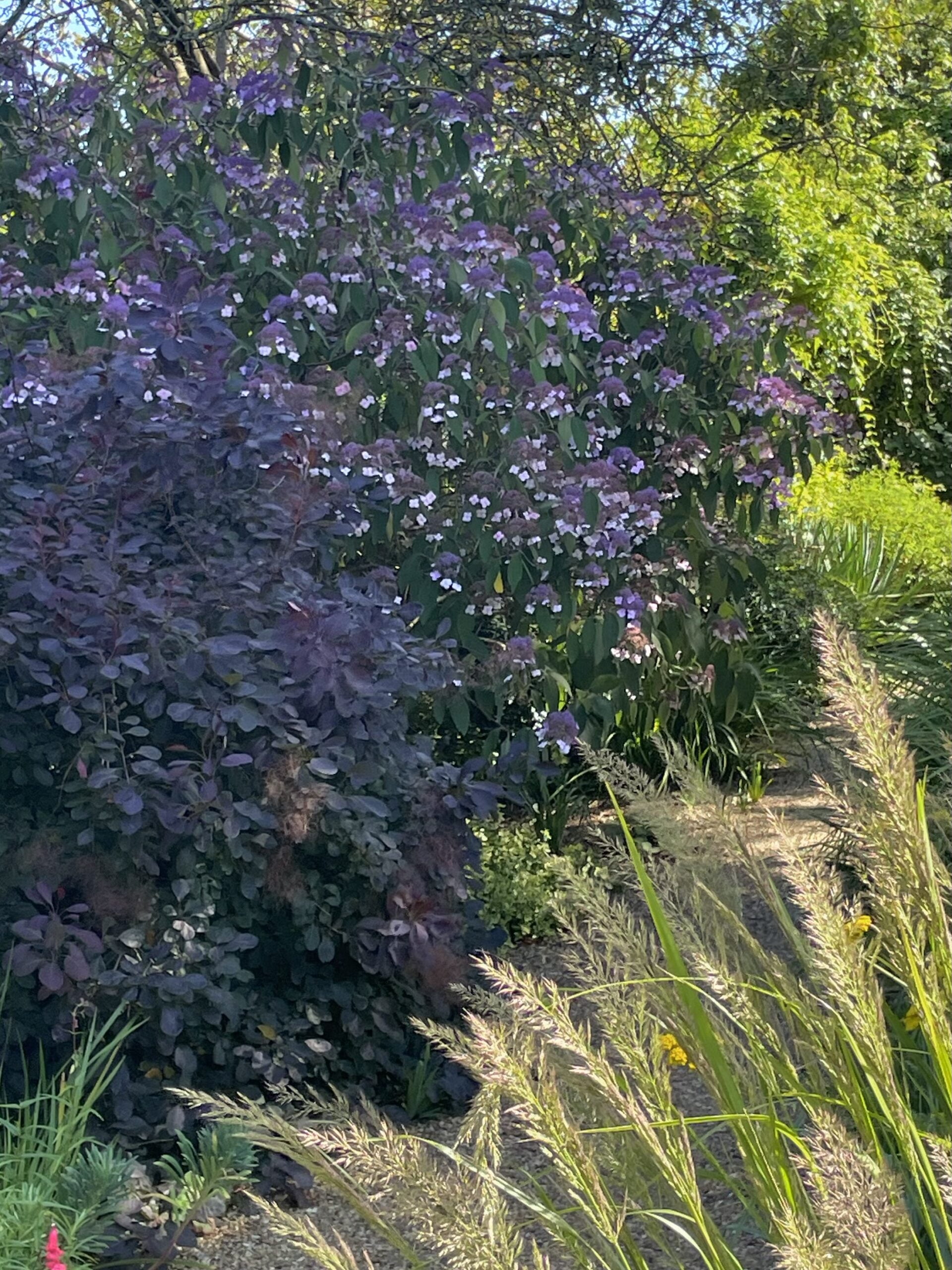
Hydrangea villosa is a lovely shade of pale mauve with woolly leaves; it just asks to be put next to something purple!
Joyce Robinson, Glorious Disarray
Perhaps it is the wet weather or maybe it is the cool temperatures we have had but the hydrangeas this year are more beautiful than ever, especially the Rough Leaved Hydrangea. There are several specimens here at Denmans Garden that have been blooming for several weeks and they look sensational, especially the one that was planted beside the purple smoke bush under the Metasequoia tree. Mrs. JH was right – it is a stunning combination.
Apparently the only species that tends to be bluish on either acidic or alkaline soil, this hydrangea can grow up to 2 meters high and wide. Its long-lasting lace cap flowers attract bees, butterflies, and other pollinators, and they look absolutely magical in early morning and early evening light. Although it is deciduous, Hydrangea villosa also has winter interest because of its architecture and its light brown peeling bark that especially stands out when planted with a dark background.
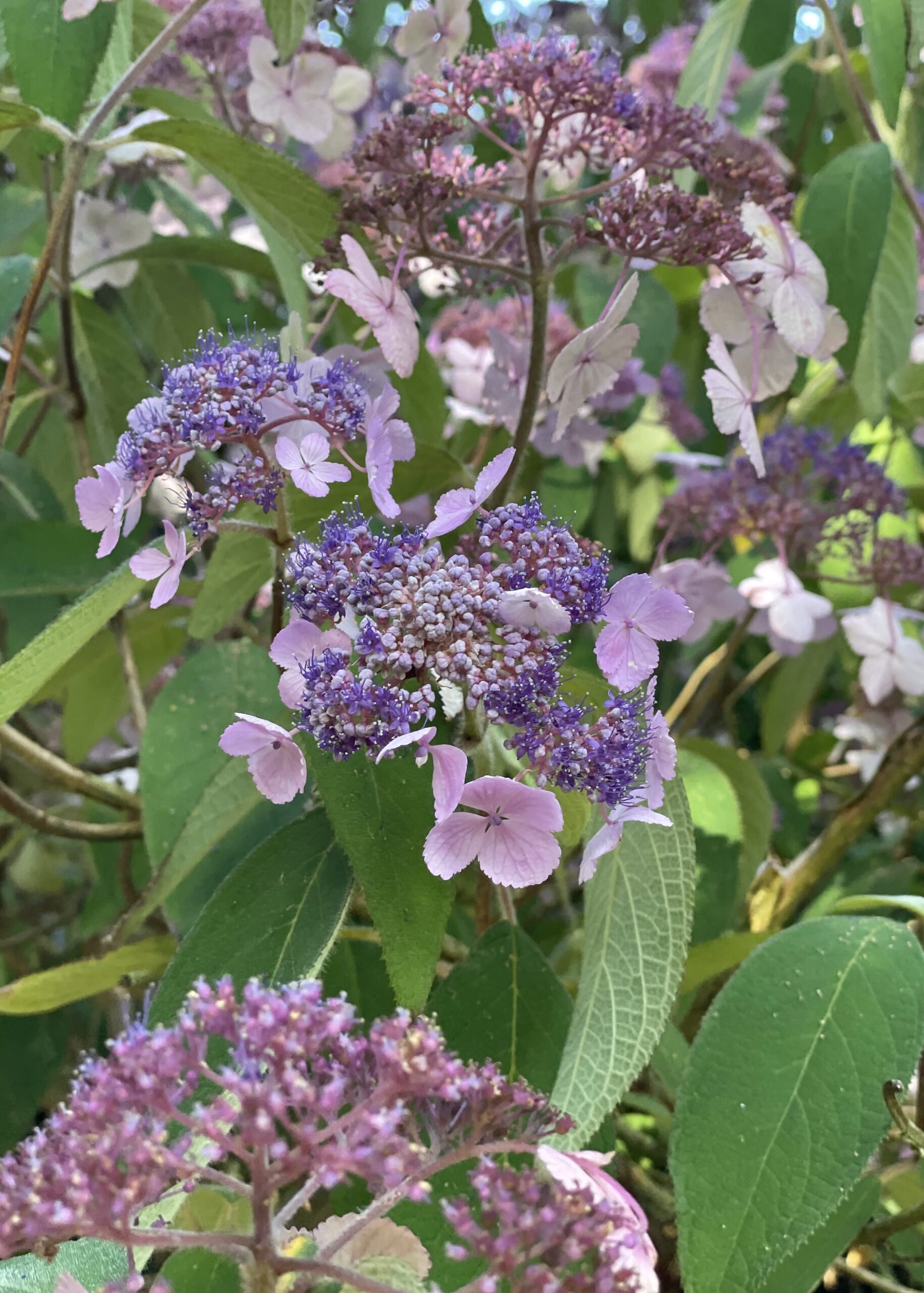
Native to the Himalyas, the Rough Leaved Hydrangea is hardy to -15 Celsius (5 Fahrenheit) and tolerates full sun but prefers partial shade and a variety of well-drained soils. While ours have tolerated the dry summers we have had, they will sulk by drooping when they go too long without water. They don’t mind being pruned but generally need very little.
And, as you might imagine, the leaves, which are long and narrow, tend to be velvety in feel and this is where its Latin name (Hydrangea aspera ‘Villosa Group’) comes from for ‘aspera’ means ‘rough’.

